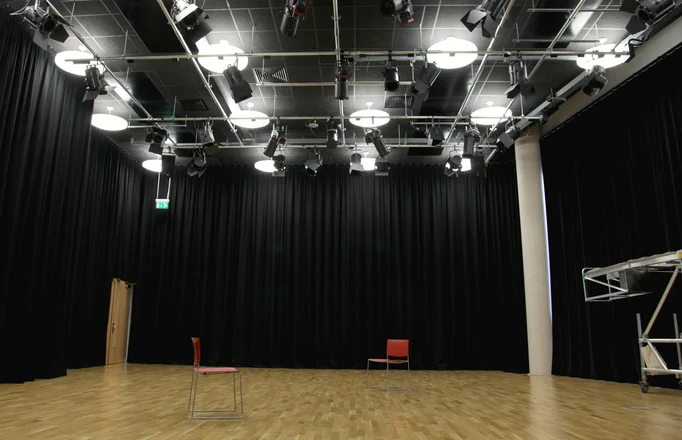Learning Environment: the set of circumstances or conditions, especially physical conditions, in which a person or community lives, works, (learns), develops, etc. (Oxford)
Before students can focus on academics, they must feel physically safe and emotionally secure. Planning and providing the most effective emotional atmosphere is especially important for teens. (One) goal is to reduce the stress that impairs effective learning and memory by building student confidence during these teen years of struggle with identity development. (Willis, 64-66) There is solid evidence of physical changes in auditory cortex processing resulting from an overall environment designed to create enrichment. (One study) reported dramatic improvement in students’ speech discrimination after classrooms were refitted with sound-absorbing material that reduced ambient noise. (Jensen, 73) Also referred to as ‘classroom environment.’
Cognitive Ease: (a cognitive state reflecting the environment) in which there are no threats, no major news, no need to redirect attention or mobilize effort. The causes of cognitive ease include “repetition,” clear display, “primed” idea, and good “mood.” The consequences of cognitive ease are that (the information or experience) feels familiar, feels true, feels good, and feels effortless. (Kahneman, 60)
Cognitive Strain: (a cognitive state reflecting the environment) indicating that a problem exists, which will require increased mobilization of (conscious effort). Affected by both the current level of effort and the presence of unmet demands. When you feel strained, you are more likely to be vigilant and suspicious, invest more effort in what your are doing, feel less comfortable, and make fewer errors, but you also are less intuitive and less creative than usual. (Kahneman, 59-60)
Learner’s Preparation: put beforehand into a suitable condition for (learning); bring into a proper state for use; get or make ready; fit out, equip. (Oxford)
Exercise: any physical activity that increases an animal’s “metabolic“ rate. (Brooker, G-14) The rate at which new neurons appear in the “hippocampus” can be influenced by cognitive activities and by exercising your brain. (Goldberg, 34) Exercise improves cognitive performance. (Medina, BSP37) Exercise improves learning on three levels: first, it optimizes your mind-set to improve alertness, attention, and motivation; second, it prepares and encourages nerve cells to "bind" to one another, which is the cellular basis for logging in new information; and third, it spurs the development of new nerve cells from "stem cells" in the hippocampus. (Ratey, 53)
Nutrition: the action or process of supplying or receiving nourishment. (Oxford) The adult brain is dependent on "amino acids," the building blocks of "proteins." Proteins may boost attention by stabilizing blood "glucose" levels. Protein and certain fat molecules are especially critical for building the fatty "membranes" of nerve cells and also for building “myelin.” Consuming complex "carbohydrates" rather than simple "sugars," can help stabilize "glucose" in the blood. The brain, unlike "muscles," cannot store carbohydrates, and so it requires a constant supply of glucose. When blood glucose drops, say, from lack of food, our faculties fade and we lose the ability to concentrate. Consuming enough iron is important for mental function. To metabolize glucose, brain cells require "oxygen," which is transported to the brain by "hemoglobin," the large iron-containing protein in "red blood cells." Research confirms that breakfast is critically important for mental function in the morning. Snacking throughout the day can help keep blood glucose levels stable. (SAM Oct/Nov07, 61)
Rest: the natural repose or relief from daily activity obtained by sleep. (Oxford) An area of (research) interest is the persistent need to take a nap, and to do so at very specific times of the day. (Medina, 158) In one study, a 26-minute nap improved NASA pilots’ performance by 34 percent. And whether you get enough rest at night affects your mental agility the next day. (Medina, 3) Several theories of sleep have been advanced including the propositions that (sleep) is a biological adaptation that conserves energy resources, and that it is a restorative process that fixes wear and tear in the brain and body. Sleep may also organize and store each day’s memories. (Kolb, 479) It is the night time when learning is consolidated, organized, and distributed to various areas of the brain. Sleep is a critical ingredient for transfer from "short-term" to "long-term memory." (Jensen, 83) Generally, children between 5 and 10 years old need about 12 hours of sleep each night; during adolescence, they require nine and a half hours. Unfortunately, many children in this age range do not meet this target. Brain function is visibly altered by ‘sleep deprivation,’ however, the degree of alternation depends on the amount of sleep lost and on the task attempted. (Wolfe, 98) The minutes before bedtime are crucial. Study, then go to sleep, in that sequence to foster optimal consolidation of memory. (Levine, 118)
Safety: the state of being protected from or guarded against hurt or injury; freedom from danger. (Oxford) A 2004 Independent School Management study surveyed parents as to the main reason they sent their children to private schools. The number one reason was safety - both physical and psychological. (Willis, 64)
